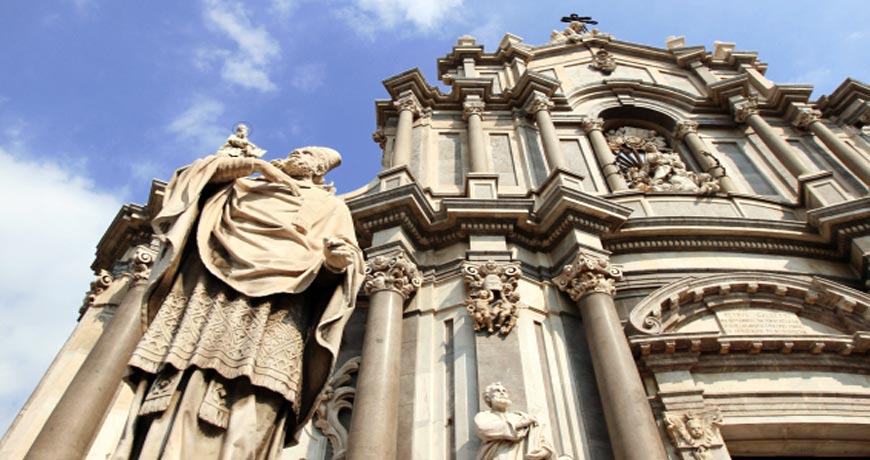Touristic information: Catania

Founded in 729 BC by Chalcidian (Greek) settlers, Catania was known in the ancient age as Katanè. The city was occupied by the Carthaginians, but already in 263 BC it became a Roman colony, entering a first stage of progress. With the fall of the Empire it started being dominated by Vandals, Goths, Byzantines and Arabs, who occupied it until 1071. The Arabs were replaced by the Normans who granted a new stage of progress to the city. Unfortunately the favourable period was interrupted by negative events. The city went through a moment of great prosperity during the Aragonese domination, but in 1693 a terrible earthquake plunged it into ruin, almost completely erasing medieval and renaissance remains. Catania went through a slow but gradual social and industrial evolution starting with the unification of Italy, until it went on to become one of the most important cultural and trading centres in southern Italy. It currently is a modern city, advanced in some sectors, such as IT and new technologies.
Catania is a city with extraordinary environmental conditions. Set in one of the most beautiful landscapes in the Mediterranean, and at the foothills of the largest volcano in Europe, the city is an essential destination for anybody heading to Sicily. Its artistic and cultural heritage covers all ages, from the gothic-roman period to the present day. From classic age there are some splendid remains, such as the Greek theatre, the Odeon and the remains of the Roman amphitheatre. Also the following works are remarkable, such as the apse and the Norman interiors of the Cathedral, later rebuilt in Baroque age, and the Svevo castle, also known as Ursino, current seat of the Museo Comunale, where you can see sculptures, weapons and sacred furnishings. Of the baroque period you can see Palazzo Biscari, the Monastero and the Chiesa dei Benedettini, with rococo and neo-classic elements, and the group of Piazza dell'Elefante. Most of the churches are also of the baroque period, and they all deserve a visit. Among the most important, S. Giuliano, S. Agata and S. Benedetto, with works by Vaccarini, S. Maria del Gesù, the Collegiata, with frescoes by Stefano Ittar.
Catania is a very youthful city, with great artistic and cultural ferments. Next to classic productions in the Teatro Massimo Bellini, for the whole year there are special happenings, such as the festival del teatro francofono or French theatre festival and the staging of drama theatres, such as the Teatro Stabile. There are also interesting cinema and music festivals held throughout the year. Catania's Festivals embrace all arts, from theatre to music, from visual arts to ballet.
